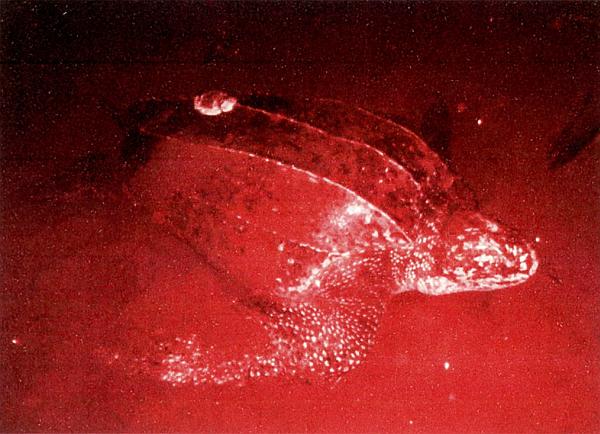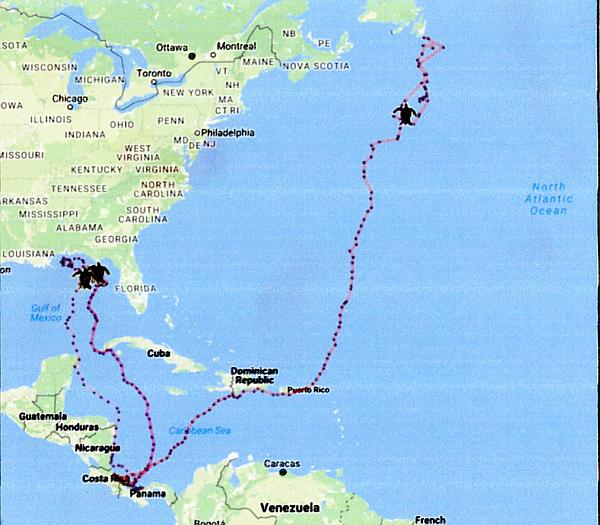A Leatherback Turtle is outfitted with a satellite transmitter in Panama in 2016
Please help us to make a generous contribution to this valuable research.
INTRODUCTION:
The non-profit SEA TURTLE CONSERVANCY (formerly the Caribbean Conservation Corporation) has its headquarters in Gainesville, Florida , and is the world’s oldest sea turtle research and conservation organisation. Founded by world-renowned sea turtle biologist Dr. Archie Carr in 1959, Sea Turtle Conservancy (STC) was the first organisation dedicated to the study and protection of sea turtles and their habitats. With a strong emphasis on on-site and science-based conservation, STC has helped answer many questions about sea turtle biology and nesting behaviour and helped spawn the global movement to study and protect these marine turtles. STC has more than 50 years of conservation and research experience and conducts programmes in Florida, Costa Rica, Panama, Bermuda and the Eastern Caribbean.
LEATHERBACK TRACKING:
The Sea Turtle Conservancy’s (STC) Caribbean Leatherback Tracking and Conservation project is furthering the cause of chelonian care and conservation by providing valuable research on the activity and movement of Leatherback Sea Turtles in pelagic environments.
Most conservation organisations, including DSTC, use nesting surveys and beach monitoring to gather information about Leatherback populations. While this provides critical information on population trends and beach hatchling productivity, much more information can be gained from monitoring Leatherback migrations and habitat use while they are at sea.
HOW THE BCG CAN HELP:
STC collects this information by attaching satellite transmitters to female Leatherbacks once they have completed nesting. STC has requested help with funding from the British Chelonia Group to help with this important research.
The work is conducted at STC study sites in Panama by Ph.D. candidate and STC staff member Dan Evans as part of a long-term sea turtle monitoring project carried out under the auspices of STC. This research simultaneously serves as the focus of Mr. Evans’ Ph.D, work at the University of Florida.
After a Leatherback Sea Turtle is outfitted with a satellite transmitter, she returns to the ocean. Every time she surfaces to breathe, which tends to be more often than other sea turtle species, a signal is sent by her transmitter to ARGOS receivers, located on an orbiting NOAA weather satellite.
The data is then transmitted via e-mail to STC’s staff member, Dan Evans, who uses that data to track and analyse Leatherback migration and foraging patterns.
Tracks of three Leatherbacks tracked by STC and Dan Evans in 2016. (Photographs: Sea Turtle Conservancy)
With this information, we are able to help solve the mysteries of the location of migratory corridors and where major concentrations of Leatherbacks occur at different times of year. STC shares this information with the scientific community and policy makers in an effort to reduce the number of Leatherback Turtles accidentally killed by longline fishing hooks each year.
If you would like to donate you can do so when you renew your membership by adding the amount to the form or you can send a separate donation by cheque or postal order made out to THE BRITISH CHELONIA GROUP and specify that you would like the donation to go to the 2017 Conservation Appeal. Please send your cheque to:
Membership Secretary BCG, PO Box 16216, Tamworth, B77 9LA.
Anne Rowberry, Conservation Officer
Please be aware that if for any reason the money donated cannot be used for this appeal the BCG will use the money to support similar chelonian conservation projects.
Top


